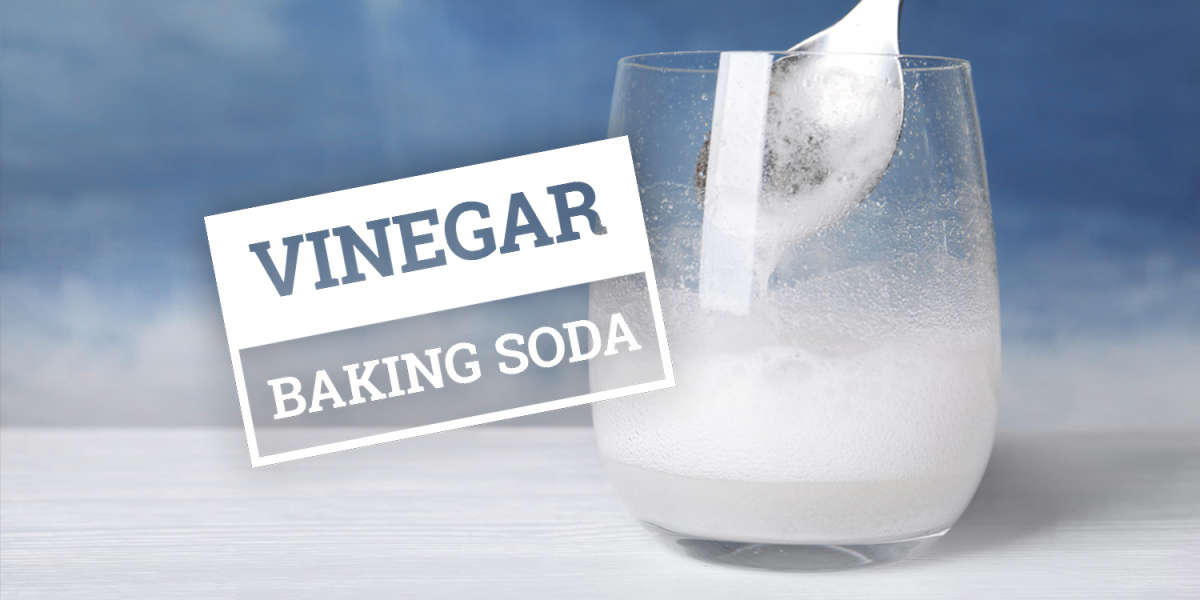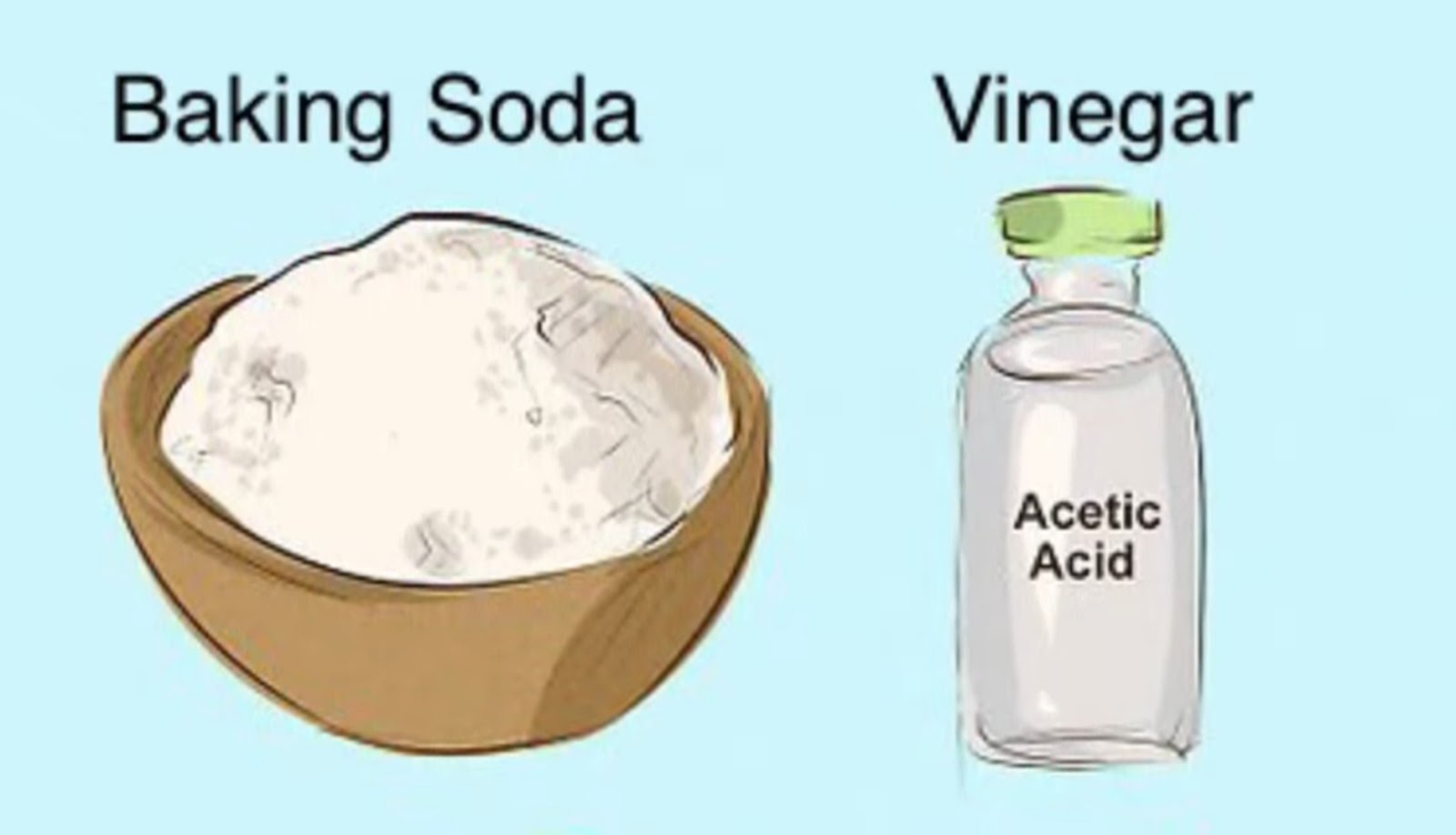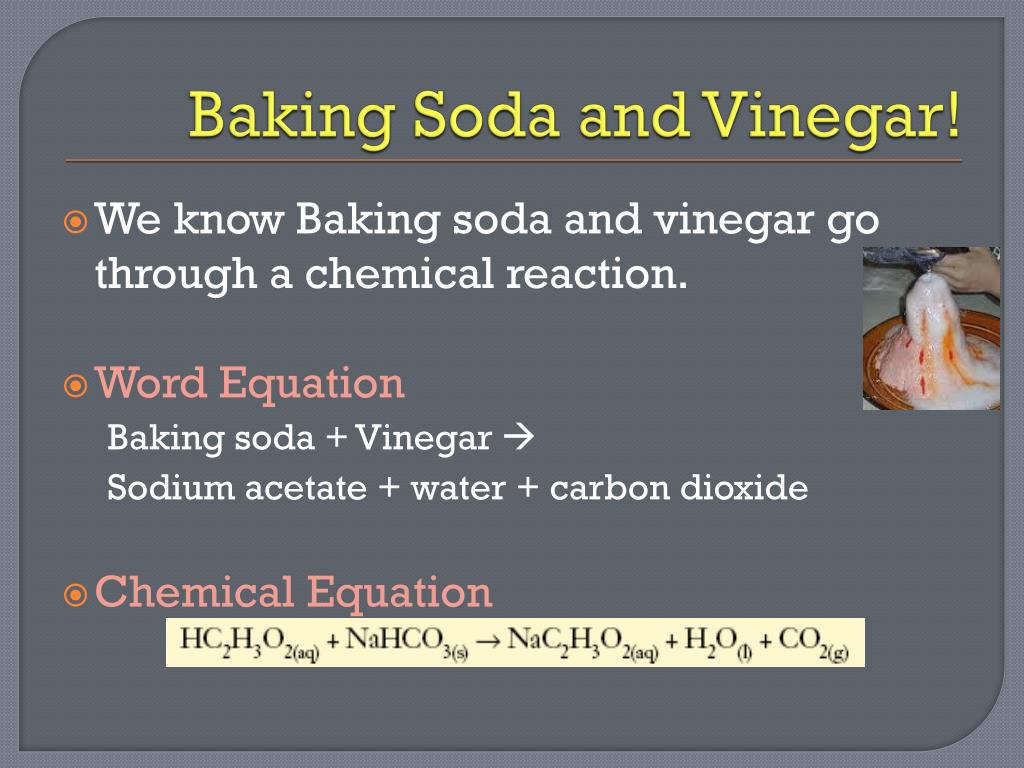
Vinegar & baking soda reaction is a simple yet powerful culinary technique. It can enhance baking and cooking, but understanding its application is crucial.
The combination of an acid and a base can transform ordinary recipes, yielding surprisingly tender textures and heightened flavors. This technique is particularly effective in baked goods, where it promotes leavening and contributes to a lighter crumb.
Mastering this interaction is invaluable for both novice and experienced cooks. It offers a readily accessible means to improve the quality and consistency of various dishes, from fluffy cakes to savory sauces.
The concept of utilizing acidic and alkaline interactions in cooking dates back centuries. Early cooks observed that certain ingredients could influence the rise and texture of doughs, unknowingly harnessing the power of chemical reactions. With the advent of modern chemistry, the specific mechanisms behind these transformations became clearer.
For home cooks, understanding the principles involved is immensely beneficial. It allows for adjustments in recipes to accommodate different ingredients or achieve desired outcomes, offering a degree of control that elevates cooking from mere following of instructions to informed creation.
Variations of this technique include using buttermilk, yogurt, or other acidic dairy products in conjunction with baking soda. A common misconception is that more acid and base equate to better results; however, maintaining proper balance is crucial to avoid off-flavors or undesired textures.
The following exploration will delve into the details of this valuable technique. Readers will learn how to harness the power of acid-base reactions in their own kitchens, unlocking new possibilities for culinary creativity and success.
Neutralization
Neutralization stands as the cornerstone of the vinegar & baking soda reaction. This process, where an acid and a base interact, results in a balanced state, diminishing the individual potency of each component. Acetic acid from vinegar reacts with sodium bicarbonate from baking soda, resulting in the formation of carbon dioxide, water, and sodium acetate.
The significance of neutralization extends beyond mere chemical balancing. It dictates the flavor profile and texture in various culinary applications. Complete neutralization ensures that neither the sharp tang of vinegar nor the slightly metallic aftertaste of baking soda dominates the final dish. Rather, it contributes to a more harmonious flavor profile. In the absence of complete neutralization, an excess of either component can lead to undesirable results, affecting both the taste and the structure of the final product.
A complete understanding of neutralization in this context equips cooks with the knowledge to precisely control the outcome of recipes. By carefully measuring and adjusting the quantities of vinegar and baking soda, one can manipulate the leavening process and flavor development. This nuanced approach ultimately empowers culinary creations, allowing for personalized adjustments and consistent, desirable results. The beauty of this knowledge lies in its capacity to transform simple reactions into reliable culinary tools.
Carbon Dioxide Release
The effervescence witnessed when vinegar meets baking soda is the unmistakable sign of carbon dioxide release, a pivotal element in the overall reaction. This gaseous byproduct, born from the interaction between acetic acid and sodium bicarbonate, is not merely a visual spectacle, it plays a fundamental role in culinary applications, particularly in baking.
Consider, for instance, a light and airy cake. The bubbles of carbon dioxide, generated by this reaction, become trapped within the batter, expanding during baking and creating a delicate, porous structure. Without this release, the cake would be dense and heavy. The amount of carbon dioxide released directly correlates to the leavening power, thus affecting the final product’s texture. Similar principles apply to other baked goods like muffins and quick breads, where this reaction serves as a primary or supplementary leavening agent.
Understanding the dynamics of carbon dioxide release allows for precise control over the texture of baked goods. Factors influencing the gas production, such as the concentration of vinegar and baking soda, temperature, and the presence of other ingredients, become levers to manipulate and fine-tune. Mastering this connection opens a path to consistent and high-quality results, transforming simple ingredients into culinary creations with desired qualities and textures.
Leavening Power
The ability to create light, airy textures in baked goods is profoundly linked to leavening power, a function beautifully demonstrated through the vinegar & baking soda reaction. This interaction provides a readily accessible method for achieving desirable volume and crumb structure in numerous recipes.
-
Carbon Dioxide Volume
The extent of the leavening hinges significantly on the volume of carbon dioxide produced. Higher concentrations of reactants, within balanced proportions, generate more gas, leading to a greater rise. In a cake, for example, a precise measurement ensures a uniform crumb.
-
Reaction Speed
The speed at which the reaction occurs is crucial. A rapid reaction, initiated prematurely, may result in gas escaping before the batter sets, reducing the leavening effect. Techniques such as using cold ingredients or adding the reactants last can moderate this rate.
-
Batter Viscosity
The viscosity, or thickness, of the batter influences the gas retention. A batter that is too thin may allow the carbon dioxide to escape easily, while a batter that is too thick might resist expansion. Recipe adjustments, such as flour quantity, address this balance.
-
Heat Activation
While the vinegar & baking soda reaction initiates at room temperature, heat accelerates the process. The oven’s warmth causes the trapped carbon dioxide bubbles to expand further, setting the final structure. Consistent oven temperature contributes to reliable leavening.
In essence, the leavening power derived from the vinegar & baking soda reaction represents a delicate interplay of chemical and physical factors. Each facetgas volume, speed, viscosity, and heatcontributes to the overall success of the baked product, highlighting the sophistication hidden within this simple culinary technique.
Tip Metadata
- Category: Cooking Techniques
Time & Effort
- Estimated Time: 2-5 minutes (excluding baking time)
- Skill Level: Beginner
- Impact: Enhances texture and rise in baked goods; adds subtle tang; can improve color.
Tools or Materials Needed
- Measuring spoons or cups
- Mixing bowl
- White vinegar
- Baking soda
- Recipe ingredients (flour, sugar, etc.)
Step-by-Step Guide
- Step 1: Calculate Ratios For every 1 cup of flour in a recipe, a general guideline is to use 1/4 teaspoon of baking soda and 1/2 teaspoon of vinegar. Adjust the quantities proportionally based on the recipe’s specific needs.
- Step 2: Measure Ingredients Separately Accurately measure the required amount of vinegar and baking soda. This precision is essential for achieving the desired chemical reaction.
- Step 3: Combine Vinegar and Baking Soda (Optional) In a separate small bowl, gently combine the measured vinegar and baking soda. Observe the immediate fizzing reaction; this indicates the release of carbon dioxide. Proceed to the next step quickly to capture the leavening power. (Alternatively, add directly to wet and dry ingredients).
- Step 4: Incorporate into Recipe If pre-mixed, quickly add the vinegar and baking soda mixture to the wet ingredients or directly into the batter. If not premixed, add the vinegar to the wet ingredients and baking soda to dry ingredients and proceed as the recipe instructs. Gently fold the ingredients together until just combined; avoid overmixing, as this can deflate the batter.
- Step 5: Bake Immediately Transfer the batter into the prepared baking pan and immediately place it in the preheated oven. The heat activates the remaining leavening power, creating a light and airy texture.
A common mistake is using too much baking soda, which can result in a metallic taste. Conversely, insufficient vinegar may not fully activate the baking soda, reducing the leavening effect. Buttermilk or lemon juice can be substituted for vinegar, offering slightly different flavor profiles. Always ensure that baking soda is fresh for optimal results. Adjust oven temperatures slightly, as needed, to compensate for increased leavening.
Pro Tip or Variation
For richer flavor and deeper color in chocolate cakes, consider using a slightly higher ratio of vinegar to baking soda. Add a tablespoon of unsweetened cocoa powder for an even more intense chocolate flavor. This technique enhances the cake’s moistness and provides a more complex taste profile.
Best Practices & Expert Tips
- Accurate Measurement is Key Precise measurement of both vinegar and baking soda is crucial for predictable results. Deviations can lead to undesirable tastes or textures.
- Use Fresh Baking Soda Baking soda gradually loses potency over time. Fresh baking soda ensures optimal leavening and flavor.
- Incorporate Quickly Once combined, the reaction between vinegar and baking soda is immediate. Incorporate the mixture into the batter swiftly to capture the released carbon dioxide.
- Moderate Mixing Overmixing the batter after adding the vinegar and baking soda can deflate it, resulting in a dense final product. Gentle folding is recommended.
- Bake Immediately The batter should be baked promptly after the addition of the acid and base. Delaying the baking allows the carbon dioxide to escape, diminishing the leavening effect.
Variations & Common Mistakes
- Lemon Juice Substitution Lemon juice can replace vinegar for a similar reaction with a citrusy flavor profile. Adjust the quantity to compensate for the acid strength.
- Buttermilk Variation Buttermilk provides both acidity and moisture. It can be used in conjunction with baking soda to create a tender crumb in baked goods.
- Overuse of Baking Soda Using too much baking soda results in a soapy or metallic taste. This is a common mistake that can ruin the final product.
- Insufficient Acid Activation Failing to use enough vinegar or acidic ingredient will prevent the baking soda from fully reacting. This leads to inadequate leavening and a less-than-ideal texture.
- Assuming All Vinegars Are Equal Different types of vinegar (white, apple cider, balsamic) have varying acidity levels. White vinegar is generally preferred for its neutral flavor, but others can be used with careful adjustments.
- Ignoring Recipe Proportions Relying solely on the “vinegar & baking soda reaction” without considering the overall balance of wet and dry ingredients can disrupt the recipe’s integrity and lead to inconsistent results.
Why This Tip Matters
The vinegar & baking soda reaction, though seemingly simple, is a powerful tool that can significantly elevate your cooking. It offers a reliable way to enhance the texture, rise, and even the subtle flavors of your baked goods.
Whether you’re whipping up a quick batch of muffins, perfecting a classic cake, or experimenting with new recipes, this technique is incredibly versatile and adaptable to various dishes and skill levels. It empowers you to achieve consistently better results in your kitchen endeavors.
So, go ahead and give it a try! Don’t be afraid to experiment with different ratios and flavor combinations to discover what works best for you. Share your own tips and tricks, or leave a comment below we’d love to hear about your experiences and culinary creations.
Happy cooking!
Images References :
Image used for illustration purposes only. All rights belong to their respective owners.


